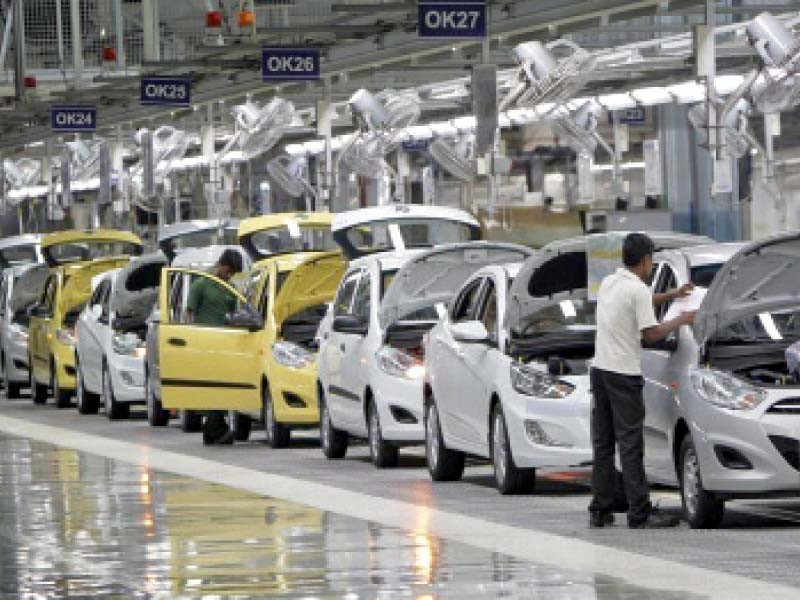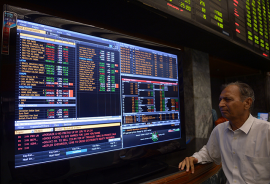
The automobile sector of Pakistan witnessed a significant growth in the outgoing year but still it underwent turbulent times owing to a host of factors such as disruption in the international supply chain, depreciation of the rupee against the US dollar, hike in interest rate and strict banking regulations.
Furthermore, the increase in taxes on cars in the mini-budget is adding to the woes.
“Year 2021 proved to be remarkable for the automobile sector as there was a volumetric sales growth of 90% on a year-on-year basis to 210,048 units compared to 110,540 units in 2020,” said Arif Habib Limited analyst Arsalan Hanif.
Automobile industry expert Mashood Ali Khan told The Express Tribune that due to the lockdowns imposed to curb the spread of Covid-19 in 2020, the industry remained closed from March to June of that year.
However, the industry had been open throughout 2021 and as a result its production was substantially higher compared to 2020, he said.
Nevertheless, the sales volume began declining from August 2021 onwards and the industry is projected to experience a further drop in the coming months.
Citing the reason, he said that the cost of doing business was climbing day after day with little to no stability in sight.
“The situation is the same in many countries around the globe but in some nations, consumer behaviour, employee loyalty and government policies have played a vital role in keeping the vehicle prices and demand stable,” he said.
New models
Scores of new vehicle models were launched in the country throughout 2021, which contributed immensely to the increase in sales volume. KIA, Honda, Toyota, Proton, Changan and Hyundai were among the firms that launched the new variants.
The surge in demand can be attributable to the pickup in economic activity and a lower policy rate in 2021, which aided car sales drastically.
Hanif stated that improved economic conditions in rural areas due to higher prices of agricultural products, bumper output of major crops and improved purchasing power also contributed to the expansion of the sector.
“Moreover, the growth seems phenomenal due to a low base effect in 2020 due to the pandemic,” he said.
The government of Pakistan also assisted the sector as it provided relief to consumers by reducing the federal excise duty (FED) on all vehicles and slashing sales tax on cars having engine capacity of 1,000cc or lower in the budget for 2021-22.
The government reduced the sales tax on cars having engine capacity below 1,000cc from 17.5% to 12.5%.
“This measure pushed down prices of cars and enhanced sales volume,” he said.
Challenges
Since the beginning of 2021, the global economy began to recover while supply chain disruptions signaled price hikes in all commodities including cars. However, the key challenge for the automobile companies in Pakistan was to lift the sales volume, which was only possible through a reduction in prices.
Khan pointed out that sharp depreciation of the rupee against the US dollar and the hike in taxes on cars in the mini-budget reversed the decrease in car prices and they rose again.
“The real challenge now is to keep prices stable in the long run,” said the auto expert. “The impact of this decision will be felt by the auto industry throughout next year because volumes are expected to fall keeping in view the poor economic conditions in the country.”
“Inflation has entered into double digits and it will hurt the automobile sector,” Khan said.
Interest rate
The low interest rate and some improvement in the macroeconomic indicators from time to time in 2021 played a key role in supporting the sales volume of automobiles during the year.
“Economic growth in fiscal year 2020-21 increased the purchasing power as well as consumer spending,” said Hanif. “The key factor that pushed up the sales volume was the reduction in interest rate following the Covid-19 outbreak in the country.”
Echoing his views, Khan said that low interest rates helped reduce the cost of car financing and inflate the sales volume.
Original equipment manufacturers
Hanif continued that in first half of the year, the listed original equipment manufacturers (OEMs) kept prices of their products constant because appreciation of the rupee against the US dollar prompted them to absorb the impact of higher raw material costs.
After the reduction in sales tax on vehicles in the budget for FY22, the OEMs passed on the benefit to the consumers and lowered car prices by Rs75,000 to Rs200,000.
But when the rupee began losing ground against the dollar in the second half of 2021, the OEMs increased car prices, citing a sharp increase in the cost of production.
Mini-budget
The federal government approved the Supplementary Finance Bill 2021 in December 2021 and proposed a hike in the federal excise duty on completely built up (CBU) units of engine capacity of 1,001-1,799cc from 5% to 10%.
Similarly, the federal excise duty on CBU units having engine capacity of 1,800-3,000cc was proposed to be increased from 25% to 30% while the levy would go up from 30% to 40% on vehicles of 3,000cc and above.
FED on the locally assembled vehicles having engine capacity of 1,001-2,000cc will rise from 2.5% to 5%.
According to Hanif, the bill proposed a hike in FED on the locally assembled vehicles of 2,000cc and above from 5% to 10%.
The levy on imported double-cabin (4x4) vehicles rose from 25% to 30%.
In addition, the FED was increased on locally assembled double-cabin (4x4) vehicles from 7.5% to 10%.
Sales tax on batteries was increased from 12% to 17%, he said. “Sales tax on locally manufactured cars having engine capacity above 850cc has gone up from 12.5% to 17%,” he said.
The services provided by automobile dealers in the Islamabad Capital Territory (ICT) will be taxed at 5%. “This will augment the cost of providing services in the automobile sector,” said Arsalan.
Published in The Express Tribune, January 2nd, 2022.
Like Business on Facebook, follow @TribuneBiz on Twitter to stay informed and join in the conversation.




1725030039-0/Untitled-design-(2)1725030039-0-165x106.webp)
1725366721-0/kyle-(1)1725366721-0-165x106.webp)



1732084432-0/Untitled-design-(63)1732084432-0-270x192.webp)








COMMENTS (2)
Comments are moderated and generally will be posted if they are on-topic and not abusive.
For more information, please see our Comments FAQ